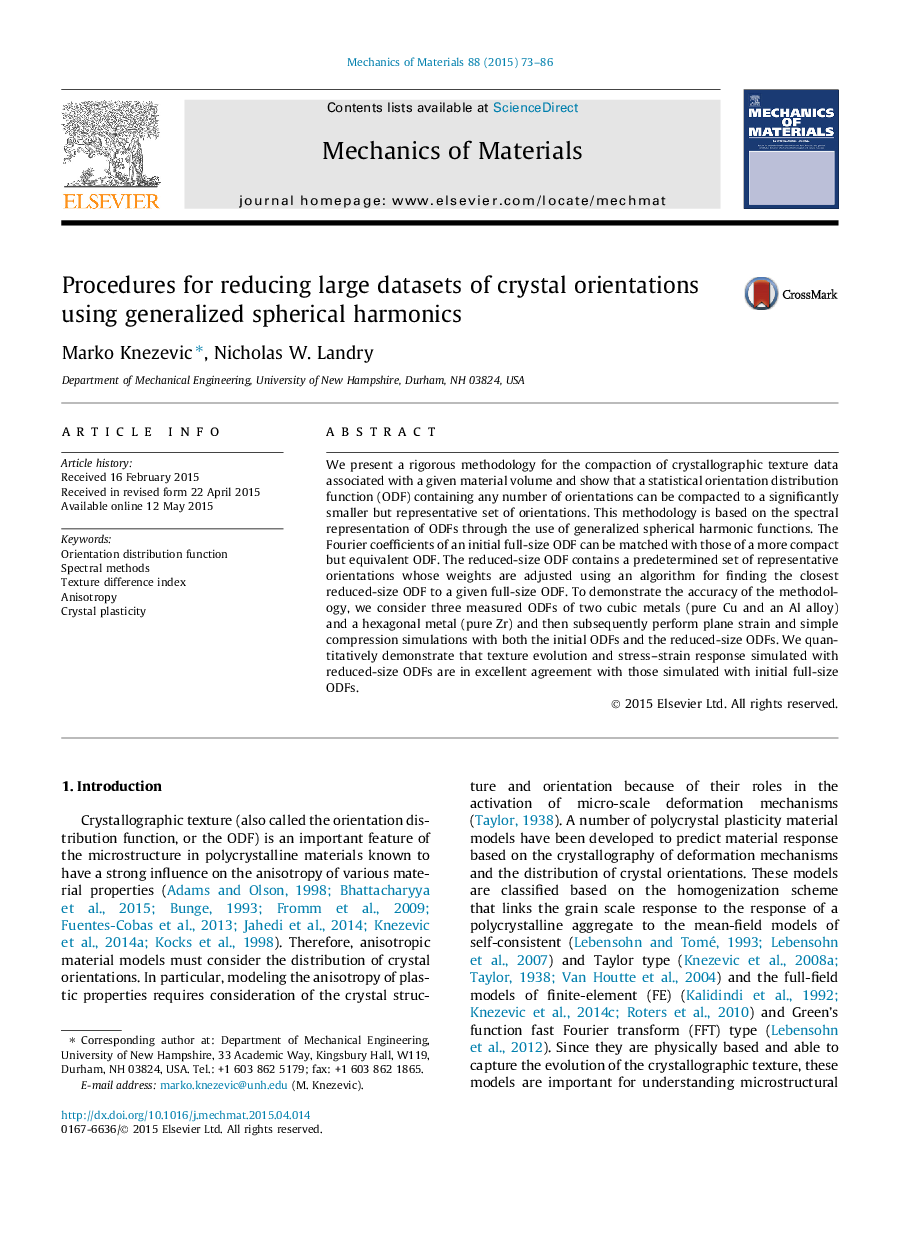| Article ID | Journal | Published Year | Pages | File Type |
|---|---|---|---|---|
| 797548 | Mechanics of Materials | 2015 | 14 Pages |
•Procedures for compaction of crystallographic texture data are developed.•Dramatic data compaction is possible with spectral representation using GSH bases.•Procedures have been validated on case studies involving cubic and hexagonal metals.•A new metric for quantitative comparison of texture data is introduced.
We present a rigorous methodology for the compaction of crystallographic texture data associated with a given material volume and show that a statistical orientation distribution function (ODF) containing any number of orientations can be compacted to a significantly smaller but representative set of orientations. This methodology is based on the spectral representation of ODFs through the use of generalized spherical harmonic functions. The Fourier coefficients of an initial full-size ODF can be matched with those of a more compact but equivalent ODF. The reduced-size ODF contains a predetermined set of representative orientations whose weights are adjusted using an algorithm for finding the closest reduced-size ODF to a given full-size ODF. To demonstrate the accuracy of the methodology, we consider three measured ODFs of two cubic metals (pure Cu and an Al alloy) and a hexagonal metal (pure Zr) and then subsequently perform plane strain and simple compression simulations with both the initial ODFs and the reduced-size ODFs. We quantitatively demonstrate that texture evolution and stress–strain response simulated with reduced-size ODFs are in excellent agreement with those simulated with initial full-size ODFs.
